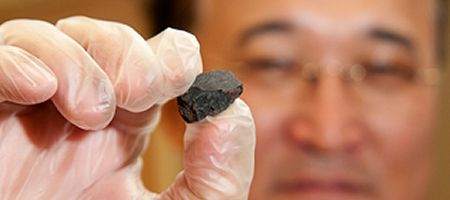A meteorite that exploded as a fireball over California’s Sierra foothills last April was one of the fastest and rarest known to have hit Earth.

A minivan-sized carbonaceous chondrite, it was composed of cosmic dust and presolar materials that helped form the planets of the solar system.
It’s meteorites like this one that are believed to have delivered water to Earth early in its history; and, by using neutron-computed tomography, the UC Davis team has been able to identify hydrogen, and therefore water-rich fragments, within the meteorite without breaking it open.
On its 50,000-year journey here it took the long way round, flying from an orbit close to Jupiter toward the sun, passing by Mercury and Venus, and then flying out to hit Earth. It entered the atmosphere at about 64,000 miles per hour, hitting at Sutter’s Mill.
“If this were a much bigger object, it could have been a disaster,” says UC Davis geology professor Qing-zhu Yin. “This is a happy story in this case. “
Until it entered Earth’s atmosphere, the meteorite weighed in at roughly 100,000 pounds. Most of that mass burned away when the meteorite exploded, and scientists and private collectors have recovered about two pounds.
For the first time, the Doppler weather radar network helped track the falling pieces, making it easier to recover them.
“For me, the fun of this scientific gold rush is really just beginning. This first report based on the initial findings provides a platform to propel us into more detailed research,” says Yin.
“Scientists are still finding new and exciting things in Murchison, a similar type of meteorite to Sutter’s Mill, which fell in Victoria, Australia, in 1969, the same year Apollo astronauts Neil Armstrong and Buzz Aldrin returned the first lunar samples to the Earth. We will learn a lot more with Sutter’s Mill.”







